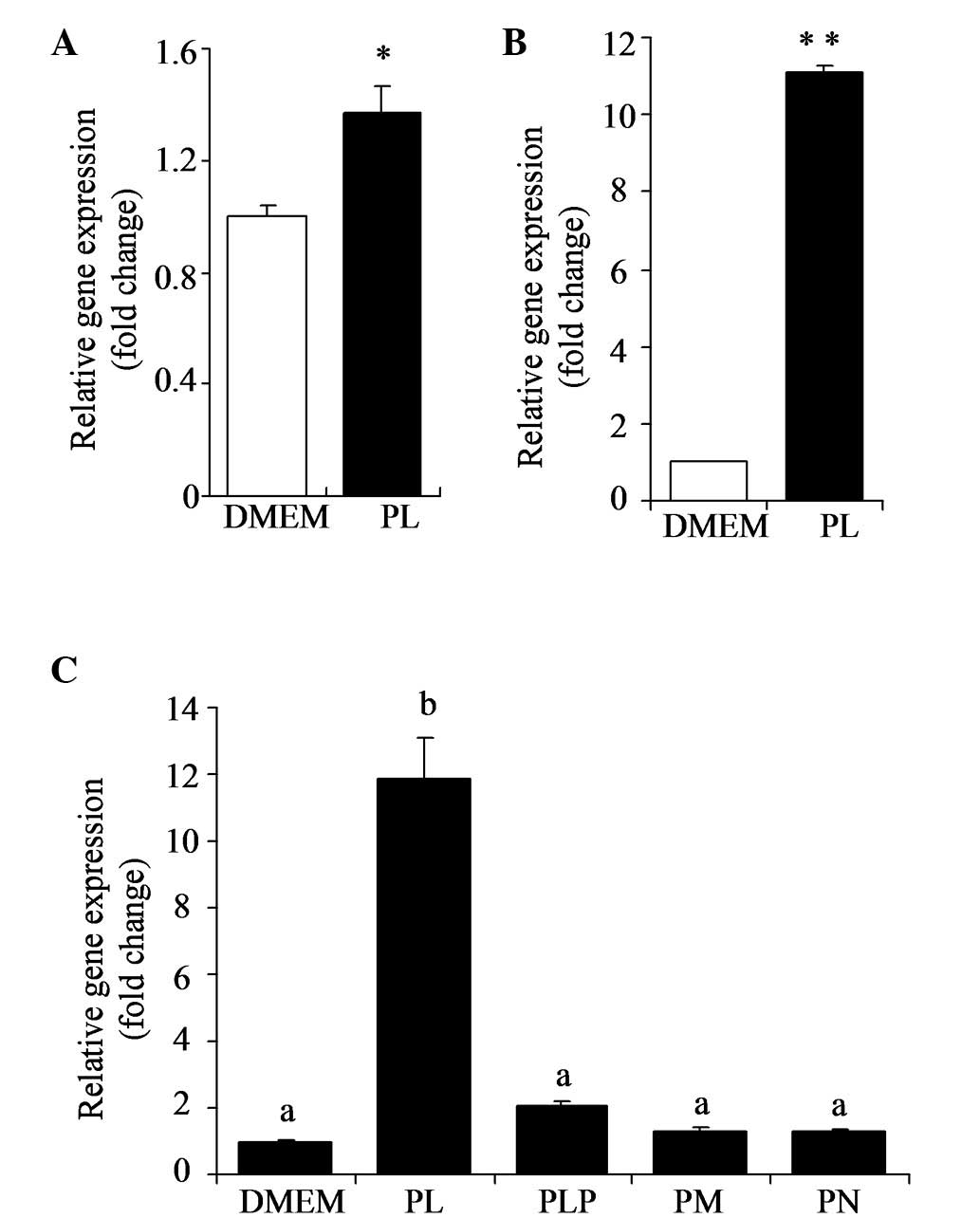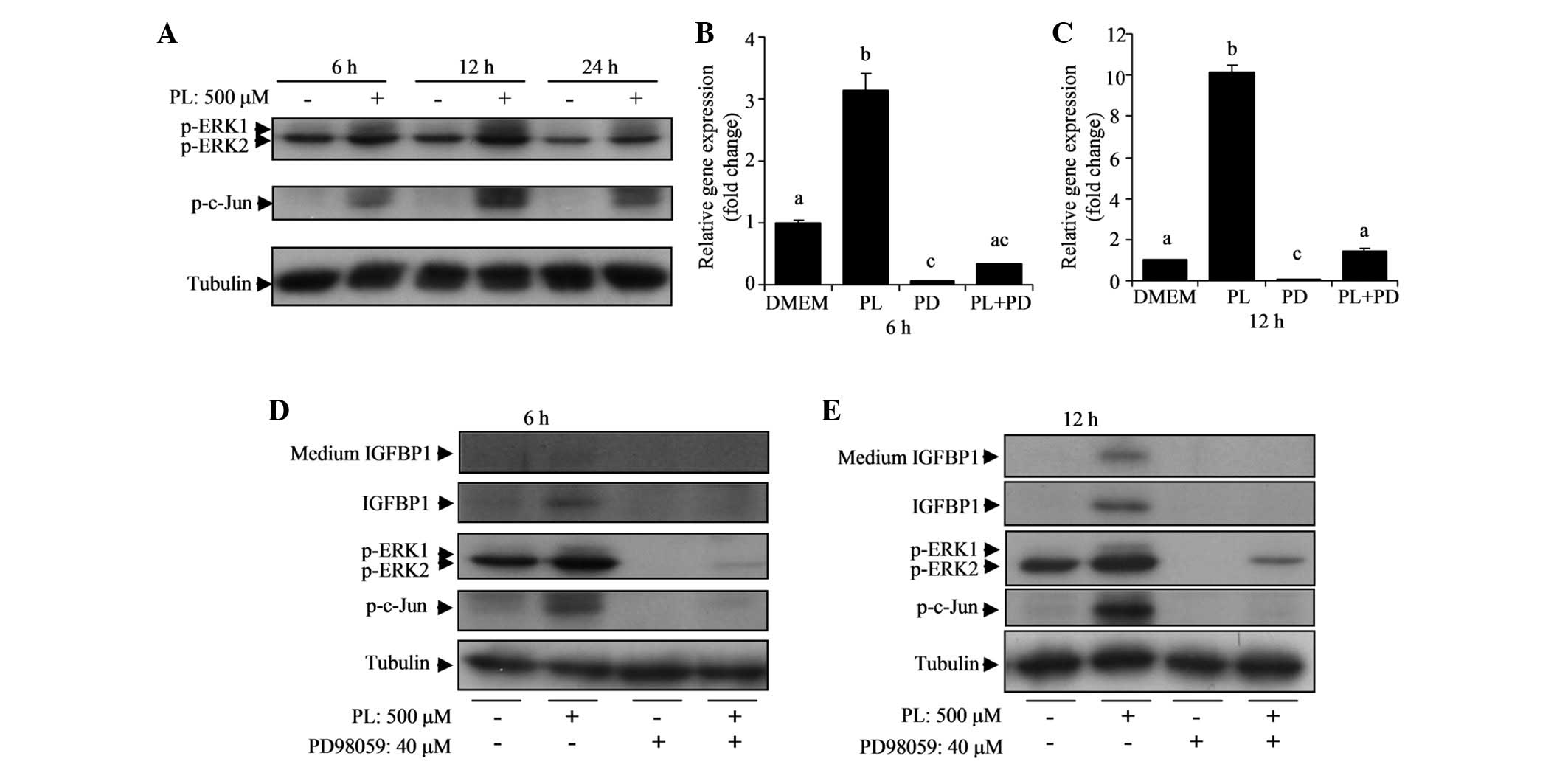|
1
|
Ishihara J, Otani T, Inoue M, Iwasaki M,
Sasazuki S and Tsugane S; Japan Public Health Center-based
Prospective Study Group. Low intake of vitamin B-6 is associated
with increased risk of colorectal cancer in Japanese men. J Nutr.
137:1808–1814. 2007.PubMed/NCBI
|
|
2
|
Theodoratou E, Farrington SM, Tenesa A,
McNeill G, Cetnarskyj R, Barnetson RA, Porteous ME, Dunlop MG and
Campbell H: Dietary vitamin B6 intake and the risk of colorectal
cancer. Cancer Epidemiol Biomarkers Prev. 17:171–182. 2008.
View Article : Google Scholar : PubMed/NCBI
|
|
3
|
Larsson SC, Orsini N and Wolk A: Vitamin
B6 and risk of colorectal cancer: a meta-analysis of prospective
studies. JAMA. 303:1077–1083. 2010. View Article : Google Scholar : PubMed/NCBI
|
|
4
|
Zhang XH, Ma J, Smith-Warner SA, Lee JE
and Giovannucci E: Vitamin B6 and colorectal cancer: current
evidence and future directions. World J Gastroenterol.
19:1005–1010. 2013. View Article : Google Scholar : PubMed/NCBI
|
|
5
|
Komatsu SI, Watanabe H, Oka T, Tsuge H,
Nii H and Kato N: Vitamin B-6-supplemented diets compared with a
low vitamin B-6 diet suppress azoxymethane-induced colon
tumorigenesis in mice by reducing cell proliferation. J Nutr.
131:2204–2207. 2001.PubMed/NCBI
|
|
6
|
Komatsu S, Watanabe H, Oka T, Tsuge H and
Kat N: Dietary vitamin B6 suppresses colon tumorigenesis,
8-hydroxyguanosine, 4-hydroxynonenal, and inducible nitric oxide
synthase protein in azoxymethane-treated mice. J Nutr Sci Vitaminol
(Tokyo). 48:65–68. 2002. View Article : Google Scholar : PubMed/NCBI
|
|
7
|
Komatsu S, Yanaka N, Matsubara K and Kato
N: Antitumor effect of vitamin B6 and its mechanisms. Biochim
Biophys Acta. 1647:127–130. 2003. View Article : Google Scholar : PubMed/NCBI
|
|
8
|
Kayashima T, Tanaka K, Okazaki Y,
Matsubara K, Yanaka N and Kato N: Consumption of vitamin B6 reduces
colonic damage and protein expression of HSP70 and HO-1, the
anti-tumor targets, in rats exposed to 1,2-dimethylhydrazine. Oncol
Lett. 2:1243–1246. 2011.PubMed/NCBI
|
|
9
|
Yanaka N, Koyama TA, Komatsu S, Nakamura
E, Kanda M and Kato N: Vitamin B6 suppresses NF-kappaB activation
in LPS-stimulated mouse macrophages. Int J Mol Med. 16:1071–1075.
2005.PubMed/NCBI
|
|
10
|
Diffley JF: Affinity labeling the DNA
polymerase alpha complex. I. Pyridoxal 5′-phosphate inhibition of
DNA polymerase and DNA primase activities of the DNA polymerase
alpha complex from Drosophila melanogaster embryos. J Biol
Chem. 263:14669–14677. 1988.
|
|
11
|
Matsubara K, Matsumoto H, Mizushina Y, Lee
JS and Kato N: Inhibitory effect of pyridoxal 5′-phosphate on
endothelial cell proliferation, replicative DNA polymerase and DNA
topoisomerase. Int J Mol Med. 12:51–55. 2003.
|
|
12
|
Martial J, Zaldivar J, Bull P, Venegas A
and Valenzuela P: Inactivation of rat liver RNA polymerases I and
II and yeast RNA polymerase I by pyridoxal 5′-phosphate. Evidence
for the participation of lysyl residues at the active site.
Biochemistry. 14:4907–4911. 1975.PubMed/NCBI
|
|
13
|
Vermeersch JJ, Christmann-Franck S,
Karabashyan LV, Fermandjian S, Mirambeau G and Der Garabedian PA:
Pyridoxal 5′-phosphate inactivates DNA topoisomerase IB by
modifying the lysine general acid. Nucleic Acids Res. 32:5649–5657.
2004.
|
|
14
|
Matsubara K, Mori M, Matsuura Y and Kato
N: Pyridoxal 5′-phosphate and pyridoxal inhibit angiogenesis in
serum-free rat aortic ring assay. Int J Mol Med. 8:505–508.
2001.
|
|
15
|
Lee PD, Giudice LC, Conover CA and Powell
DR: Insulin-like growth factor binding protein-1: recent findings
and new directions. Proc Soc Exp Biol Med. 216:319–357. 1997.
View Article : Google Scholar : PubMed/NCBI
|
|
16
|
Yee D, Jackson JG, Kozelsky TW and
Figueroa JA: Insulin-like growth factor binding protein 1
expression inhibits insulin-like growth factor I action in MCF-7
breast cancer cells. Cell Growth Differ. 5:73–77. 1994.PubMed/NCBI
|
|
17
|
Van den Berg CL, Cox GN, Stroh CA,
Hilsenbeck SG, Weng CN, McDermott MJ, Pratt D, Osborne CK,
Coronado-Heinsohn EB and Yee D: Polyethylene glycol conjugated
insulin-like growth factor binding protein-1 (IGFBP-1) inhibits
growth of breast cancer in athymic mice. Eur J Cancer.
33:1108–1113. 1997.PubMed/NCBI
|
|
18
|
Zhang X and Yee D: Insulin-like growth
factor binding protein-1 (IGFBP-1) inhibits breast cancer cell
motility. Cancer Res. 62:4369–4375. 2002.PubMed/NCBI
|
|
19
|
Ngo TH, Barnard RJ, Leung PS, Cohen P and
Aronson WJ: Insulin-like growth factor I (IGF-I) and IGF binding
protein-1 modulate prostate cancer cell growth and apoptosis:
possible mediators for the effects of diet and exercise on cancer
cell survival. Endocrinology. 144:2319–2324. 2003. View Article : Google Scholar : PubMed/NCBI
|
|
20
|
Wei EK, Ma J, Pollak MN, Rifai N, Fuchs
CS, Hankinson SE and Giovannucci E: A prospective study of
C-peptide, insulin-like growth factor-I, insulin-like growth factor
binding protein-1, and the risk of colorectal cancer in women.
Cancer Epidemiol Biomarkers Prev. 14:850–855. 2005. View Article : Google Scholar : PubMed/NCBI
|
|
21
|
Le Marchand L, Wang H, Rinaldi S, Kaaks R,
Vogt TM, Yokochi L and Decker R: Associations of plasma C-peptide
and IGFBP1 levels with risk of colorectal adenoma in a multiethnic
population. Cancer Epidemiol Biomarkers Prev. 19:1471–1477.
2010.PubMed/NCBI
|
|
22
|
Rajwani A, Ezzat V, Smith J, Yuldasheva
NY, Duncan ER, Gage M, Cubbon RM, Kahn MB, Imrie H, Abbas A,
Viswambharan H, Aziz A, Sukumar P, Vidal-Puig A, Sethi JK, Xuan S,
Shah AM, Grant PJ, Porter KE, Kearney MT and Wheatcroft SB:
Increasing circulating IGFBP1 levels improves insulin sensitivity,
promotes nitric oxide production, lowers blood pressure, and
protects against atherosclerosis. Diabetes. 61:915–924. 2012.
View Article : Google Scholar
|
|
23
|
Taub R: Liver regeneration 4:
transcriptional control of liver regeneration. FASEB J. 10:413–427.
1996.PubMed/NCBI
|
|
24
|
Leu JI, Crissey MA, Craig LE and Taub R:
Impaired hepatocyte DNA synthetic response posthepatectomy in
insulin-like growth factor binding protein 1-deficient mice with
defects in C/EBP beta and mitogen-activated protein
kinase/extracellular signal-regulated kinase regulation. Mol Cell
Biol. 23:1251–1259. 2003. View Article : Google Scholar
|
|
25
|
Ink SL and Henderson LM: Vitamin B6
metabolism. Ann Rev Nutr. 4:455–470. 1984. View Article : Google Scholar
|
|
26
|
Nakari M, Kanouchi H and Oka T: High dose
of pyridoxine induces IGFBP-3 mRNA expression in MCF-7 cells and
its induction is inhibited by the p53-specific inhibitor
pifithrin-α. J Nutr Sci Vitaminol (Tokyo). 57:280–284.
2011.PubMed/NCBI
|
|
27
|
Frost RA, Nystrom GJ and Lang CH:
Stimulation of insulin-like growth factor binding protein-1
synthesis by interleukin-1beta: requirement of the
mitogen-activated protein kinase pathway. Endocrinology.
141:3156–3164. 2000.PubMed/NCBI
|
|
28
|
Leu JI, Crissey MA, Leu JP, Ciliberto G
and Taub R: Interleukin-6-induced STAT3 and AP-1 amplify hepatocyte
nuclear factor 1-mediated transactivation of hepatic genes, an
adaptive response to liver injury. Mol Cell Biol. 21:414–424. 2001.
View Article : Google Scholar : PubMed/NCBI
|
|
29
|
Magne L, Blanc E, Marchand A, Fafournoux
P, Barouki R, Rouach H and Garlatti M: Stabilization of IGFBP1 mRNA
by ethanol in hepatoma cells involves the JNK pathway. J Hepatol.
47:691–698. 2007. View Article : Google Scholar : PubMed/NCBI
|
|
30
|
Kanouchi H, Shibuya M, Tsukamoto S,
Fujimura Y, Tachibana H, Yamada K and Oka T: Comparisons of uptake
and cell surface binding among pyridoxal, pyridoxine, and
pyridoxamine in RAW264.7 cells. Nutrition. 26:648–652. 2010.
View Article : Google Scholar : PubMed/NCBI
|
|
31
|
Lumeng L, Brashear RE and Li TK: Pyridoxal
5′-phosphate in plasma: source, protein-binding, and cellular
transport. J Lab Clin Med. 84:334–343. 1974.
|
|
32
|
Anderson BB, O’Brien H, Griffin GE and
Mollin DL: Hydrolysis of pyridoxal-5′-phosphate in plasma in
conditions with raised alkaline phosphate. Gut. 21:192–194.
1980.
|
|
33
|
Sakurai T, Asakura T, Mizuno A and Matsuda
M: Absorption and metabolism of pyridoxamine in mice. I. Pyridoxal
as the only form of transport in blood. J Nutr Sci Vitaminol
(Tokyo). 37:341–348. 1991. View Article : Google Scholar : PubMed/NCBI
|
|
34
|
Leppä S, Saffrich R, Ansorge W and Bohmann
D: Differential regulation of c-Jun by ERK and JNK during PC12 cell
differentiation. EMBO J. 17:4404–4413. 1998.PubMed/NCBI
|
|
35
|
Shen J, Lai CQ, Mattei J, Ordovas JM and
Tucker KL: Association of vitamin B-6 status with inflammation,
oxidative stress, and chronic inflammatory conditions: the Boston
Puerto Rican Health Study. Am J Clin Nutr. 91:337–342. 2010.
View Article : Google Scholar : PubMed/NCBI
|














